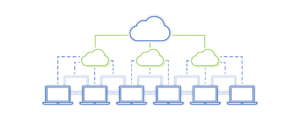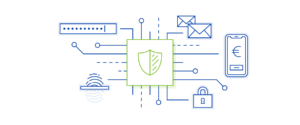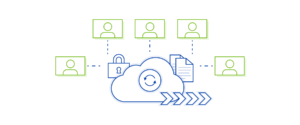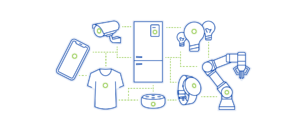IT Trends 2021: What we can expect
The IT world is changing rapidly. According to Moore’s Law, the processing speed of computers doubles every 18 months. This means that the development of the last few years can’ t be compared with the entire first decade of this century.
With the rapid pace of development, it isn’t always easy to keep track of current IT trends. Many trends have been around for some time. They are not entirely new, but still highly relevant and gaining more and more importance. We have summarized for you which IT trends await us in 2021 and what companies should look out for.

Distributed Cloud
A trend that currently still seems complex for many companies but should be on their radar anyway: Distributed Cloud. Here, the cloud is decentralized, while the load of servicing remains with the respective providers. Well-known video streaming portals, for example, already rely on this cloud delivery model.
Distributing cloud services across different physical locations allows companies to get closer to end users and access large amounts of data more quickly. This can reduce latency and improve redundancy. It also enables flexible location. Companies should definitely pursue this approach and observe how the trend will develop in future.

Hyper automation
Innovation without automation? No, not imaginable. Automation allows tasks to be completed automatically, which in turn frees up employees and creates more resources for innovation. Many companies already have pilot projects for automating processes, and in the course of the hyped digital transformation, this is also becoming increasingly important for companies.
Hyper automation goes beyond the classic automation strategy and enables the automation of complex business processes. The difference to classic automation is that hyper automation combines, coordinates and connects different technologies. For instance, technologies used are Robotic Process Automation (RPA), Machine Learning and Artificial Intelligence. The goal is AI-driven decision making. What further characterizes hyper automation is that employees can also be involved in the process. They can train the automation tools.

Cybersecurity – „Cybercriminals never sleep“
Cybersecurity is certainly not a new topic. Nevertheless, it should be a trend for every company to deal with it in detail. In 2020 every second company in Austria was a victim of a cyberattack. Therefore, companies should ensure sufficient protection against attacks or email phishing attempts – large and small alike. Organizational measures as well as IT security solutions make it more difficult for potential attackers and increase the level of protection.
Data protection and thus data integrity are also of ever-increasing importance. Once compromised, data has little to no value to companies. We have already explained how to ensure integrity in an IT system and network in a previous blog post about data integrity.

Anywhere Operations
By the end of 2023, 40% of organizations are expected to deploy Anywhere Operations. The current situation certainly had an impact on this. In 2020, digital transformation was pushed hard and became even more the focus of companies. Home office enabled geographical independence, but in the same course it also meant redefining and rethinking business processes. The Anywhere Operations model is now supposed to help with this.
Gartner has summed up Anywhere Operations in one sentence: An IT operating model that allows customers to be supported from anywhere, employees to be employed anywhere, and services to be available from anywhere in the world (keyword: distributed infrastructure). Among other things, it is designed to provide businesses and customers with secure remote access to data, facilitate collaboration, and thereby increase productivity. Additionally, it will drive automation within the enterprise, all while leveraging cloud and edge infrastructure. Companies that want to work out a more flexible business model, with cloud integration, should take a closer look at this trend.

IoT Devices & Security
The Internet of Things (IoT) is by no means a first-time trend. Already today, almost 27 billion “things” are connected via the Internet worldwide. Estimates are that this number will double by 2030. The value of these development is of great importance to companies according to a recent IoT study. Costs are reduced and productivity can be increased. The estimated economic value added by 2030 is put at more than $14 trillion.
The development in acceptance and use by end customers is also increasing rapidly. In 2021, 1 million IoT devices will be purchased and installed per hour. 3.5 billion cellular devices with IoT connections will exist by 2023. Smart clothing and the healthcare market are just two of the many industries that are subject to enormous increases.
The security aspect in particular is the challenge for IoT. Threats from hackers, data breaches, information breaches are prevalent in this area. DDoS attacks on APIs or similar are also on the rise. We at Anexia can provide valuable support in this area with our long experience in the security field.
Conclusion
The Corona pandemic is part of the reason why the world of work is changing. Traditional office work and face-to-face meetings with customers have become rare or, in some cases, are being eliminated altogether. That’s why it’s becoming increasingly important for companies to drive technological and business innovation. Every single trend could help in this process. However, it is always important to think about a strategy in advance so that you get to the desired result and the project doesn’t come to nothing. Whether the trends for 2021 will come true remains to be seen. But we are curious.